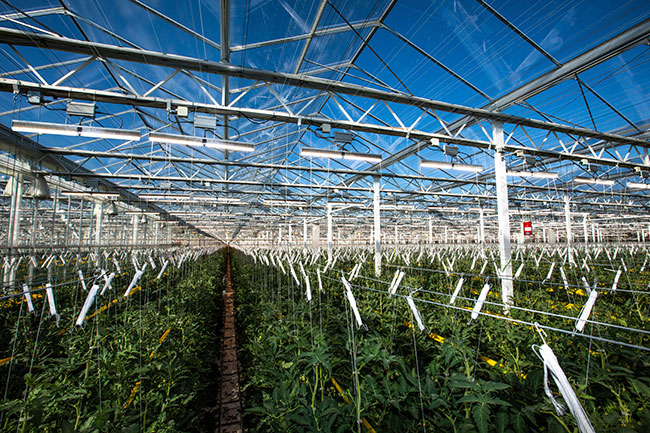
What’s your lighting strategy?
Now that the darkest days of winter are behind us and we are gaining more sunlight with each day, let’s talk about greenhouse lighting.
Lighting is not just about the efficacy of your equipment, it’s important to create a strategy to have the greatest success in your operation.
I had an informative discussion with Ashley Veach, strategic account manager at Fluence and the director of horticulture services, Abhay Thosar recently about lighting strategies and tips for choosing new systems. Here’s their expert advice.
GPN: Growers should have a lighting strategy. What is involved in developing that strategy?
Abhay Thosar: When it comes to different geographic locations and crops, it’s important to understand the physiology of the crop and objectives that the grower would like to achieve using supplemental lighting. Natural light conditions inside the greenhouse at the canopy level and what kind of air movement is happening in the greenhouse are also deciding factors to begin with your lighting strategy.
What humidity levels can they maintain? How are they maintaining the right day and night temperatures? Since light drives most of the plant physiological processes and these are dependent on the environmental factors, all of these factors are interrelated. It’s important how the grower fine tunes these other factors to get the best response by manipulating the lighting.
Lighting is one of the important factors that drives eight other factors that are supplementing to the plant growth. So, we say lighting strategy in general but if I have to expand that term, I would say it’s a plant growth strategy where lighting is one of the components that drives it.

GPN: So if growers are shopping for a new lighting system, what should they be looking for? And does that differ if they want to update their current lighting systems?
Ashley Veach: In terms of updating, that will depend on what they’re looking to update. If they want to update light intensities, that may be an easier solution where perhaps they can increase the light density, allowing an increase in overall light intensity.
If they want to change spectrum or looking to potentially grow different crops, that’s a different conversation where we need to reevaluate what they currently have installed in their greenhouse and if that particular spectrum and light intensity will work for what they want to do for future or new crops.
With a new project, it’s important to start with the basics like talking to suppliers and understanding the warranty, the efficiency, the light intensities they can offer, and that can be validated through lighting layouts.
And from there, they need to look at uniformity and supplemental light intensities, that’s where a lot of the lighting strategy comes into play. So, looking at supplemental light levels not just based on crop and geographical location but also understanding the greenhouse, whether it’s a poly versus glass greenhouse. Then we want to work closely with them to make sure we’re hitting their minimum targeted DLI all year round.
From there, you look at costs like overall price if there are utility rebates available, and that could go for existing lighting or new lighting. There’s a lot of great utility rebates out there that offer incentives for both retrofit projects, adding additional lighting or new construction projects.
Abhay Thosar: Growers ask: What is the best spectrum for my crop? This isn’t an easy question to answer because there is so much more to it than just spectrum. This is exactly where we want to point out that infrastructure, crop type and grower objectives are what helps decide the best spectrum that you want for your crop. This is something that I think is really important for the growers to consider – each scenario is different so it’s better to create a specific lighting plan for your operation rather than generalizing the spectrums and light intensity for different crops.


 Video Library
Video Library 




















